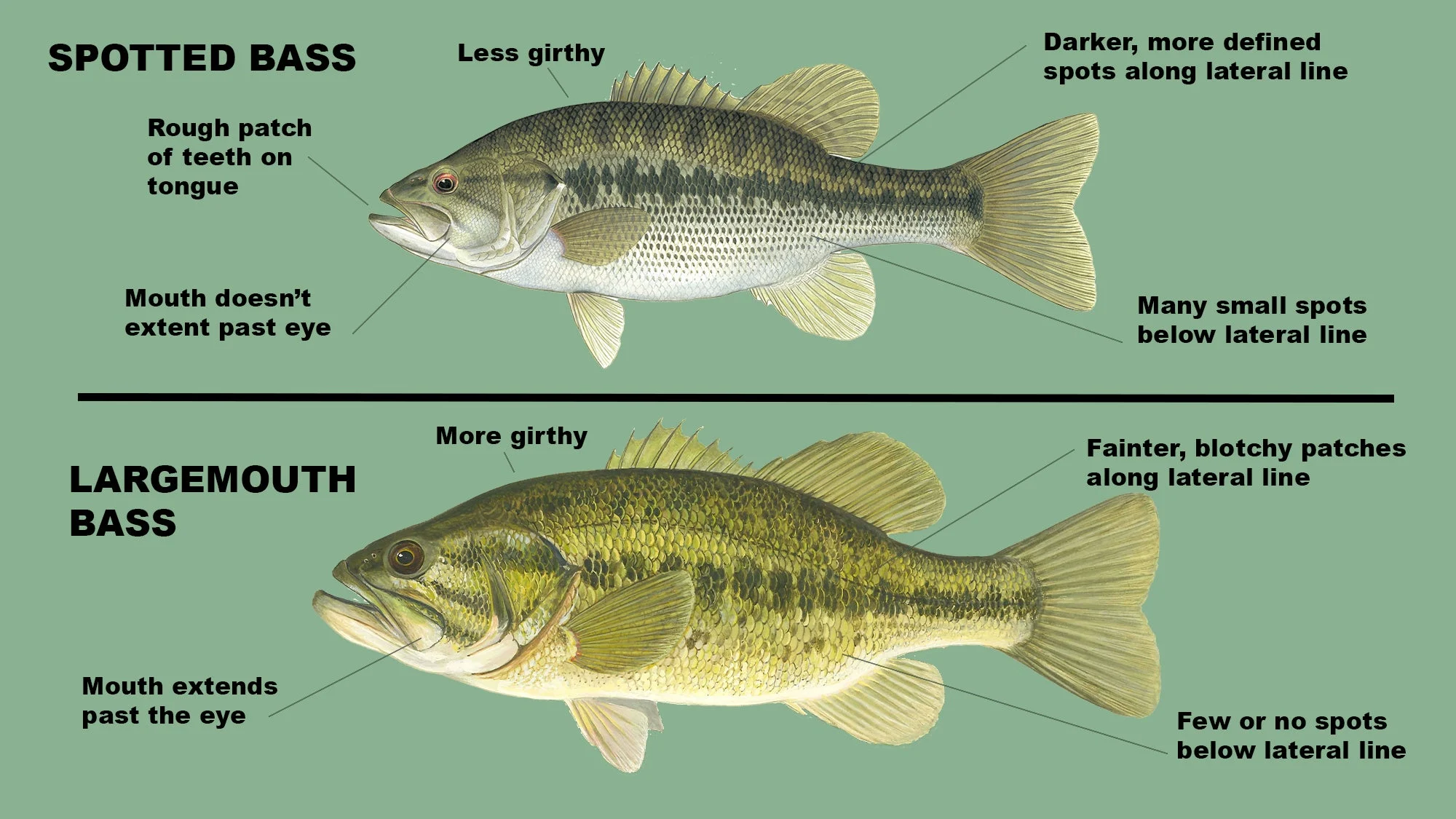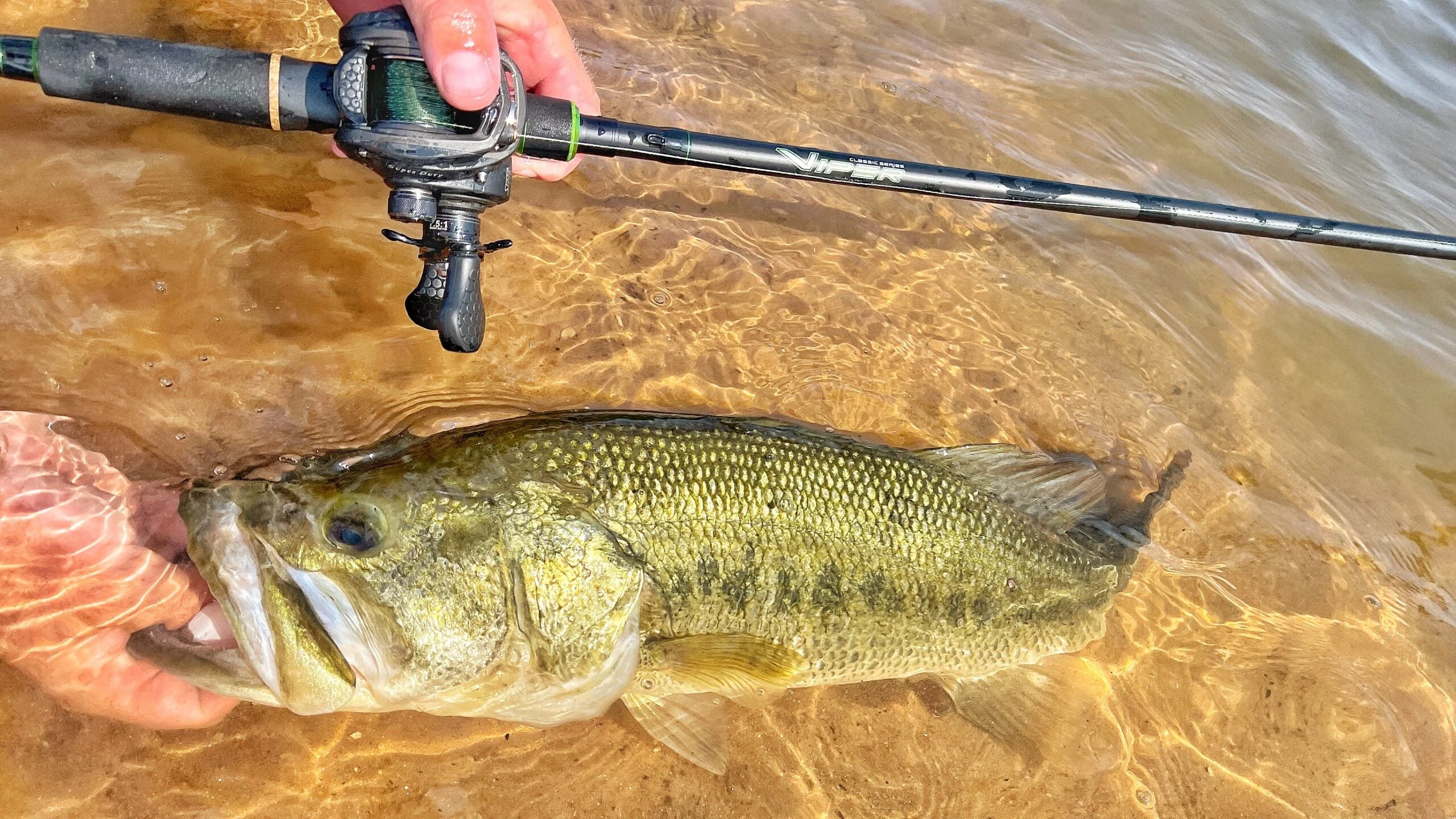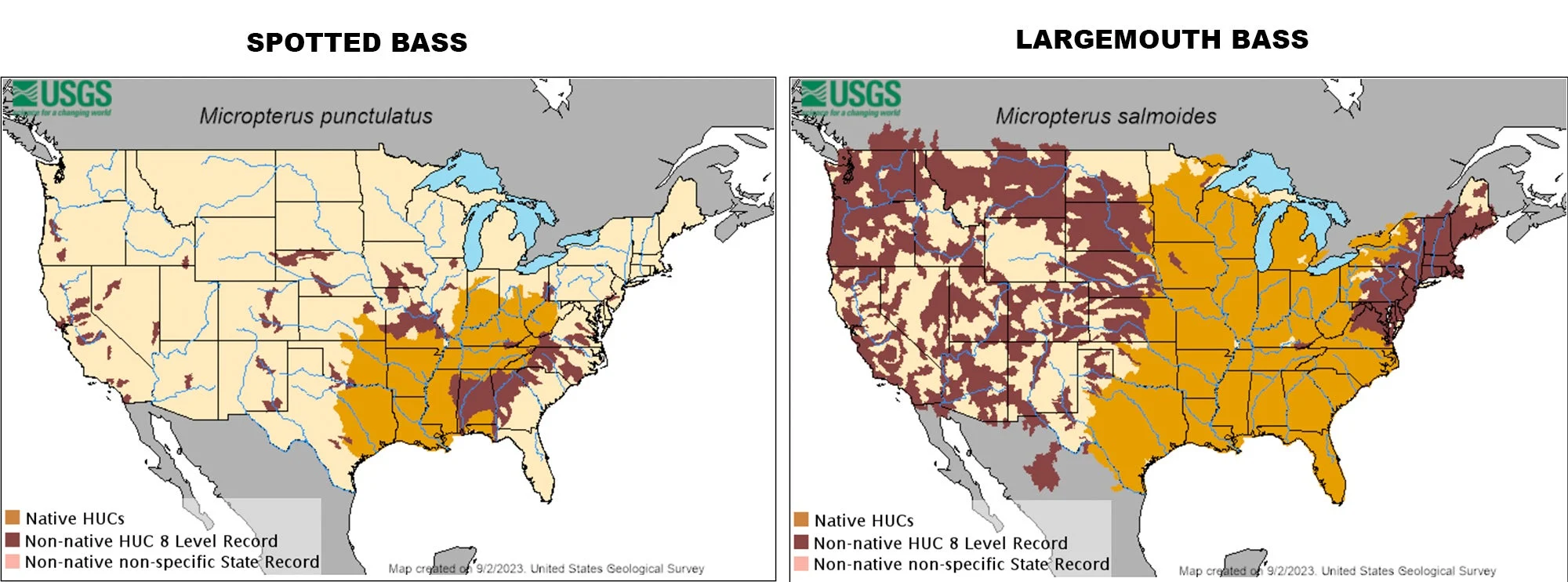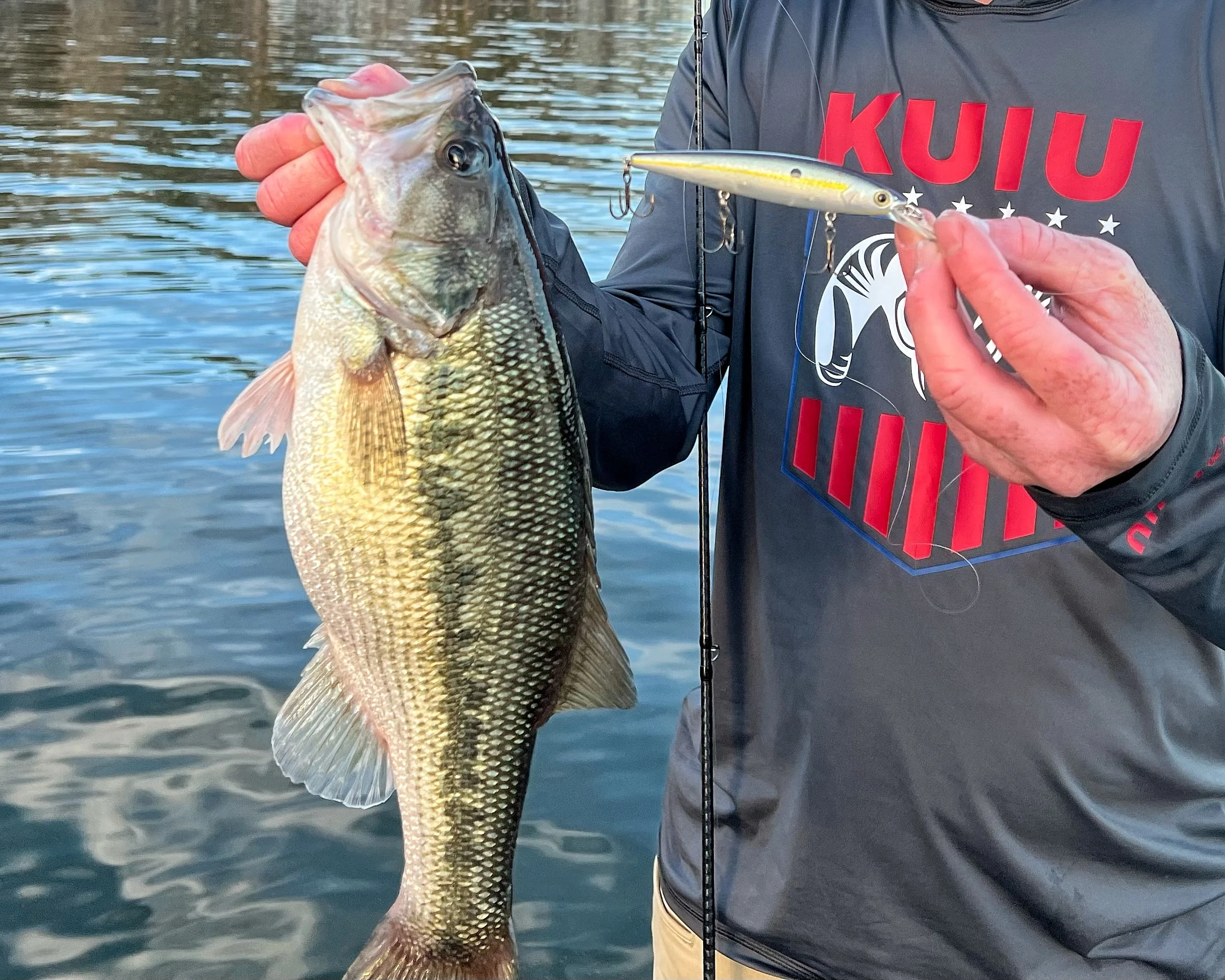Spotted bass and largemouth bass have a lot in common. They look alike; they can inhabit the same places in the same lakes; they eat the same forage; and they’ll fall for many of the same baits. But when it comes to spotted bass vs largemouth bass, there are several key differences that set the two apart.
Spotted bass, also called simply “spots” or “Kentucky bass," tend to be more prevalent in deeper water on fisheries where both species are present. On average, spots don’t grow as big as largemouth. And when comparing the pound-for-pound fight of spotted bass vs largemouth, the spots usually win out. Let’s take a closer look.

Table of Contents
How to ID Spotted Bass vs Largemouth
Physical Appearance
Size
Range and Distribution
Where to Find Them
How to Catch Them
Conclusion
How to ID Spotted Bass vs Largemouth
Physical Appearance

Although there are multiple species of spotted and largemouth bass, we’ll primarily look at the main strains of each for the sake of comparison: the Micropterus punctulatus (spotted bass) and Micropterus salmoides (largemouth bass). Both of these bass are members of the sunfish family, as are also black bass.
There are several key physical differences between the two that allow you to quickly ID a spotted bass vs largemouth bass. Spotted bass will typically have lots of small spots below the lateral line, a darker and a more defined line of spots along its lateral line, and somewhat fainter but visible spots above that line as well. A largemouth will typically have fainter, larger blotches of dark color along its lateral line and a few or no obvious spots above and below. Many spotted bass also have a rough patch of teeth on their tongues that can be used to differentiate them from largemouths. The mouths of spotted bass are also comparatively smaller.
Overall Size

Spots are typically not as tall from belly to back compared to largemouths, which develop more girth as they age. And as a rule, largemouths grow much larger than spots, with the world-record spot weighing 11 pounds, 4 ounces compared to George Perry’s famous 22-pound, 4-ounce world-record largemouth.

A 2- to 3-pound traditional (or Kentucky) spot is a quality catch on most fisheries where they are present. Alabama (or Coosa River) spots grow much larger, with 4- to 5-pound bass of this subspecies prevalent in some fisheries. The largemouth, however, still have the size advantage, as it takes one bigger than 5 pounds to really grab the attention of other anglers.
Range and Distribution of Spotted Bass vs Largemouth Bass

Largemouth and spotted bass occupy many of the same waterways around the country, as both are prevalent across the Southern States and along the West and East Coasts. Largemouths are found farther into the Northern United States and up into Canada. Spots and largemouth have even been introduced into other international fisheries in South Africa and Japan.
The Alabama subspecies of spotted bass is native to the Alabama River and other fisheries in the Southeast. But these bass have also been introduced in places like California, where they are thriving and have become some of the largest spotted bass in the world. There are also other strains of largemouth bass scattered around the country and world, such as the Tiger Bass (a cross between the native Florida Largemouth Bass and Northern Largemouth Bass), bred for their aggression and fast growth.
Where to Find Both Species When Fishing
Largemouth bass are typically found in shallower water compared to spotted bass, which like to school up at greater depths, chasing bait out in the open or relating to deep cover like brush, road beds, and rock piles. Largemouths stay shallower most of the year, preferring to operate as loners or in small schools, with the exception of the summer months when some will school up in deeper, cooler water where forage is more prevalent.
Largemouths are opportunistic feeders that typically prefer to hunt around some type of shallow cover, like wood, vegetation, or docks. They’ll either sit stationary and use the cover as an ambush point, pouncing on unsuspecting prey when it swims by, or they’ll patrol a shallow area around the cover, looking to flush bait out and attack it.
How to Catch Spotted Bass and Largemouth Bass

There are dozens of effective techniques for targeting largemouth and spotted bass, many of which work on both species. Of course, live bait such as worms, crawdads, and small baitfish work well for catching both species. But the two can also be caught with a host of artificial lures like topwaters, jigs, swimbaits, Texas rigs, Carolina rigs, crankbaits, spinnerbaits, and vibrating jigs.
Finesse presentations like Ned rigs and dropshots are particularly effective on spotted bass in water deeper than 10 feet. An angler flipping shallow cover or throwing a frog is more likely to catch largemouth bass. The middle ground, where you’ll see a lot of these fish mix together, is when fishing crankbaits, jigs, and other lures in 10 to 20 feet of water.
Final Thoughts on Spots and Largemouths
There are really more similarities than differences when looking at spotted bass versus largemouth, where they live, how they can be targeted, and the food they eat. The differences are more important to tournament anglers and trophy hunters than most other anglers, as largemouth tend to grow much bigger. But when it comes to just having fun targeting an aggressive gamefish with a lot of fight for its size, both largemouth and spotted bass make great quarry—and in many places where the latter lives, you’ll have a shot at the former too.


